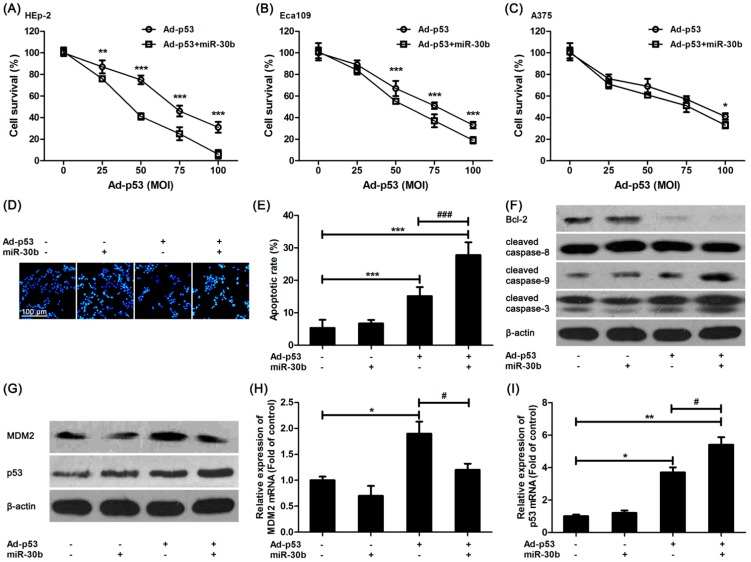Figure 2.
Overexpression of miR-30b improved Ad-p53-induced cell apoptosis via enhancing p53 pathway. (A) After HEp-2 cells were infected by miR-30-lentivirus vector for 16 h, Ad-p53 vector at different MOIs was added into culture medium for another 24 h, then MTT assay was performed to detect cell viability; (B) Similar MTT assay was performed in Eca109 cells; (C) Similar MTT assay was performed in A375 cells. * p < 0.05, ** p < 0.01, *** p < 0.001 compared to Ad-p53-treated alone cells, n = 6; (D) After HEp-2 cells were infected by miR-30-lentivirus vector (200 MOI) for 16 h and stimulated with Ad-p53 (50 MOI), the cells were stained with Hoechst33342 and bright nuclei indicated apoptotic cells. Scale bar = 100 μm and referred to all panels; (E) Statistical analysis of Hoechst staining, *** p < 0.001 compared to untreated HEp-2 cells, ### p < 0.001 compared to Ad-p53-treated alone group, n = 4; (F,G) HEp-2 cells were treated as in Hoechst staining, western blot was performed. β-actin was used for loading control. All blots were repeated for at least three times; (H,I) HEp-2 cells were treated as in Hoechst staining, qRT-PCR was performed to detect the mRNA expression of p53 and MDM-2. * p < 0.05, ** p < 0.01 compared to untreated HEp-2 cells, # p < 0.05 compared to Ad-p53-treated alone group, n = 3.

